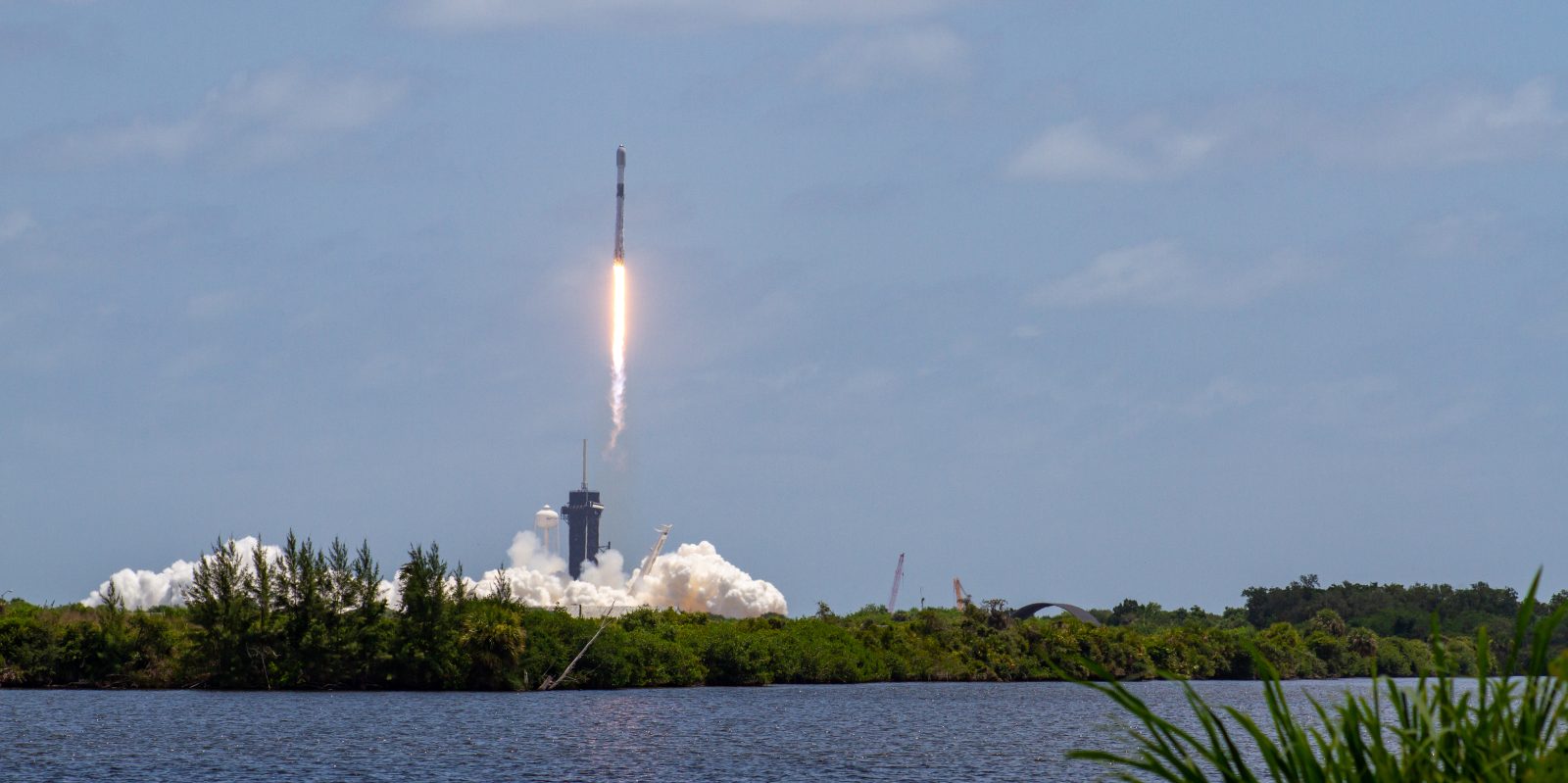
Over the weekend, SpaceX launched three Falcon 9 rockets within 37 hours. The first occurred Friday morning, breaking SpaceX’s record for reflown boosters. The record now sits at 13.
SpaceX pushes reuse record to 13
Friday’s Starlink mission didn’t seem too special, unless you noticed which booster was doing the lifting. B1060 made its 13th flight, lifting 53 more Starlink satellites into orbit. This pushes the record for how many times SpaceX can fly its boosters.
This launch also marked the 100th booster reflight, a crazy milestone for a company that many doubted could ever refly one. Finally, the third milestone for this launch was the 50th consecutive landing of a Falcon 9 booster, with B1060 landing on A Shortfall of Gravitas after launching.
List of flights for Falcon 9 Booster 1060
SpaceX’s first flight of B1060 took place two years ago, launching a GPS satellite on June 30, 2020. Below is a list of all of B1060’s flights up to the Starlink flight last Friday.
- GPS III SV03 Matthew Henson – June 30, 2020
- Starlink v1.0 L11 – September 3, 2020
- Starlink v1.0 L14 – October 24, 2020
- Türksat 5A – January 8, 2021
- Starlink v1.0 L18 – February 4, 2021
- Starlink v1.0 L22 – March 24, 2021
- Starlink v1.0 L24 – April 29, 2021
- Transporter-2 – June 30, 2021
- Starlink Group 4-3 – December 2, 2021
- Starlink Group 4-6 – January 19, 2022
- Starlink Group 4-9 – March 3, 2022
- Starlink Group 4-14 – April 21, 2022
- Starlink Group 4-19 – June 17, 2022
As you can see, the bulk of B1060’s flights have been for internal SpaceX missions like Starlink. This is intentional, as Elon Musk stated the company would use these missions to push reusability records until something fails. What will fail? Who knows, it could be something we will see or something unseen to the public.
Two more SpaceX launches, one from each coast
Following B1060’s record-setting flight, SpaceX continued with two more launches for commercial customers. We’ve seen several back-to-back launches between launch pads, but this was the first time SpaceX conducted a launch from all three of its Falcon 9 launch sites so quickly.
The second launch took place Saturday morning, with SpaceX launching an intelligence satellite for Germany into a sun-synchronous orbit from Vandenberg Space Force Base. SpaceX’s California launch site isn’t used often, five times so far this year, one away from tying the most prolific year of 2018.
The third and final launch occurred early Sunday morning from SLC-40 and carried a Globalstar satellite to low Earth orbit. Their has been some speculation that a second undisclosed payload rode along with Globalstar. Between the public payload’s low weight paired with a drone ship landing and the use of a payload dispenser, it make sense if it was not alone.
This would make sense if a US-classified payload was ridesharing on the mission. We will have to wait for reports of more than one registered spacecraft in a similar orbit to Globalstar to verify this. Either way, SpaceX was able to conduct three launches, from three launch pads, for three different customers. That is mighty impressive, and we expect to see more of this as SpaceX pushes what is possible with its high launch cadence.
FTC: We use income earning auto affiliate links. More.


Comments